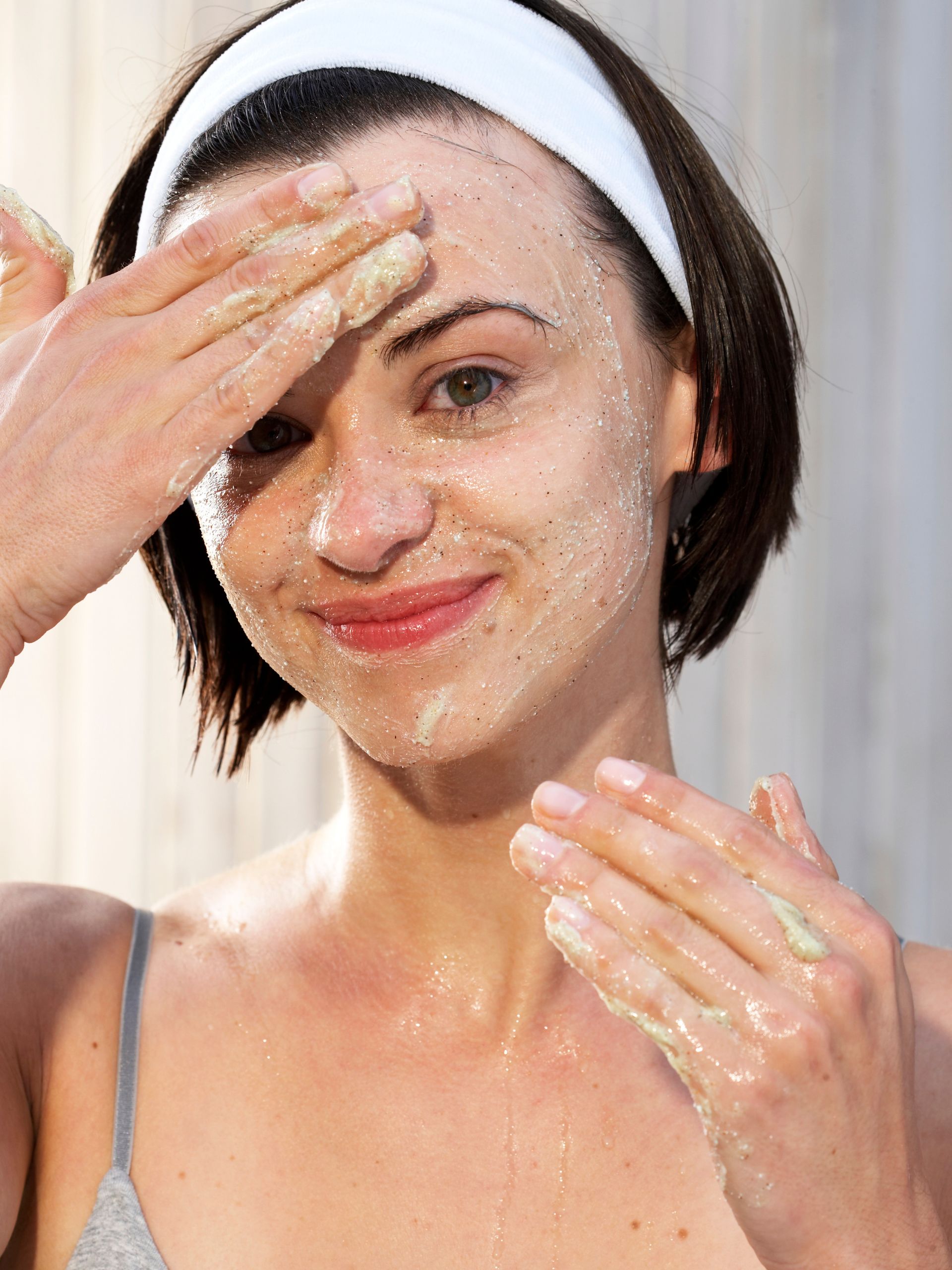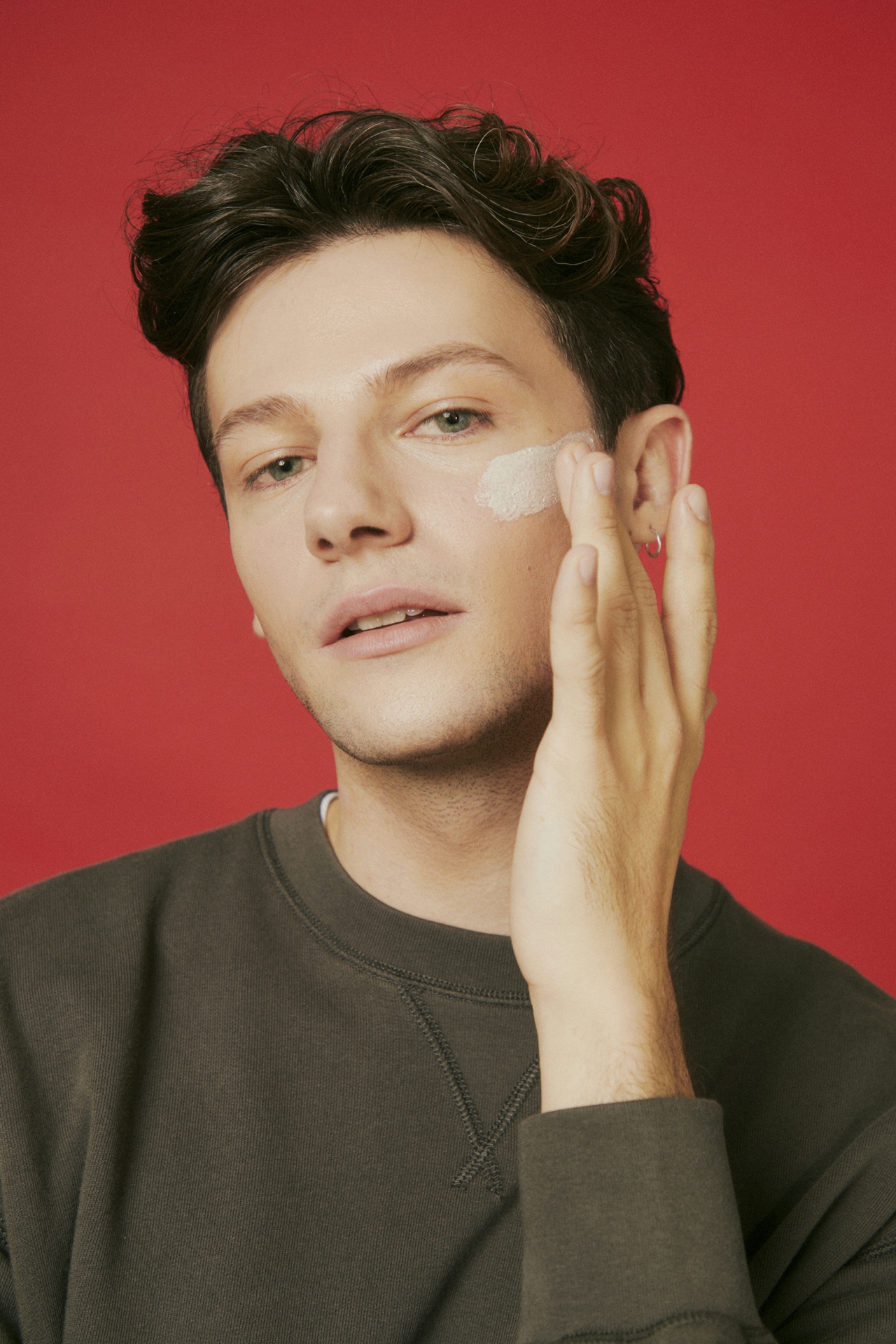
- Dry Skin Characteristics
- What causes Dry Skin?
- How to care for Dry Skin
- 1. Use a cleanser that’s gentle and hydrating
- 2. Avoid alcohol-based products
- 3. Use products with active ingredients like Hyaluronic Acid
- 4. Exfoliate with Alpha Hydroxy Acids (AHA)
- 5. Look for thick moisturisers with protective properties
- 6. Consider adding a facial oil, on top of your moisturiser as the final step in your routine
- The Edit
Dry Skin Characteristics
With all of the information out there, knowing your skin type can be a little confusing. Dry skin typically features the following characteristics:
- Your skin always feels tight and brittle, especially when you move your facial muscles or after cleansing your face
- Skin flakes are a common occurrence, it looks like you’re constantly peeling
- Dullness all day, every day – your skin has no natural glow, or it takes a lot of effort to create the glow
- Wrinkles tend to come about earlier, along with deep creases and fine lines
What causes Dry Skin?
Your skin has a protective barrier which keeps things like germs and pollutants out of skin, and keeps moisture inside the skin. With dry skin folks, the protective barrier is more prone to breaking down, leading to a loss of moisture as it evaporates.
Unlike oily skin which is caused by the body’s inner mechanisms (ie: sebum overproduction), essentially, dry skin is caused by water loss from the outer layer of skin. There a variety of culprits that create this loss, such as:
- Heating and cooling from appliances
- Cold and windy weather conditions
- Using harsh cleansers or detergents
- Additional skin concerns (ie: psoriasis, eczema etc.)
- Genetics and general ageing
The key to caring for dry skin is using gentle, typically cream based products that add hydration to the skin that don’t damage the skin barrier. Think of it like giving your skin a gigantic drink of water.
How to care for Dry Skin
1. Use a cleanser that’s gentle and hydrating
Avoid foaming cleansers — these are incredibly drying for this skin type. Using a foaming cleanser will only strip what little oil your skin naturally produces, and that’s the last thing you need!
Instead, use hydrating cleansers. These are usually cream-based, so research cream cleansers, cleansing milk, and cleansing oils. These cleanse just as thoroughly as foaming cleansers, without drying out your skin and stripping away oils.
Micellar waters are also excellent for dry skin types. However, we recommend it as a pre-cleanse before using a hydrating cleanser to ensure your skin is clean and happy.
Recommended products:
- CeraVe Hydrating Cleanser
- Avene Gentle Milk Cleanser
- Bioderma Sensibio H2O Soothing Micellar Water Cleanser
2. Avoid alcohol-based products
Drinking your favourite cocktail is totally fine by us, but using alcohol-based products is a no-go for dry skin. The worst culprit? Toners.
There are many alcohol-based toners on the market, and you should avoid these like the plague. They are astringents and will only dry your skin out even further.
Watch out for astringent alcohol ingredients like:
- Ethanol
- Isopropyl alcohol
- Alcohol denat
- Methanol
However, there are some good alcohols that dry skin can use. These are known as fatty alcohols, and are emollients which can soften and soothe the skin. Examples include:
- Cetearyl Alcohol
- Stearyl Alcohol
- Cetyl Alcohol
If fatty alcohols are in your skincare products, fret not — they won’t dry out your skin. Toners aren’t essential skincare products, but if you must use them, below are our product recommendations.
Recommended products:
- Kiehl’s Ultra Facial Toner
- KLAIRS Supple Preparation Unscented Toner
- Paula’s Choice RESIST Advanced Replenishing Toner
3. Use products with active ingredients like Hyaluronic Acid
Hyaluronic Acid is an excellent ingredient for dry skin. Why? This nifty chemical compound attracts and locks moisture into the skin. It’s also incredibly gentle, bringing moisture to the top of the skin layers which results in that healthy, hydrated glow.
It’s an ingredient that can be easily incorporated into your existing skincare routine, as it plays well with other active ingredients like niacinamide (vitamin b), ascorbic acid (vitamin c) and tocopherol (vitamin e).
However (and this is a big one), ensure you apply your hyaluronic acid product to damp skin. This gives the compound added water to absorb and hold to, rather than pulling moisture straight out of your dry skin.
Recommended products:
- Estee Lauder Advanced Night Repair Serum
- Boost Lab Hydro Boost Serum
- NIOD Multi-Molecular Hyaluronic Complex
4. Exfoliate with Alpha Hydroxy Acids (AHA)
There are two main types of exfoliating acids available on the market: Alpha Hydroxy Acid (AHA) and Beta Hydroxy Acid (BHA). Simply put, AHA’s are better suited to dry skin while BHA’s are more beneficial for oily skin.
The most effective AHA’s are Glycolic Acid and Lactic Acid. Other forms of AHA include Malic Acid, Citric Acid and Tartaric Acid to name a few. You’ll often find these exfoliants at concentrations between 3-10%, sometimes, even up to 30%.
AHA exfoliants work by exfoliating and dissolving the top layer of dead skin to reveal new skin cells underneath. In doing so, skin flakes and peeling are significantly reduced, as well as wrinkles and fine lines. The result is a brighter complexion, with an added firmness and smoother skin texture.
You can buy these as physical scrubs or leave-on exfoliants. We prefer the latter because not only are leave-on exfoliants gentler, they require less effort overall. Simply over it on your face, finish with a moisturiser on top and let it work overnight to reveal noticeable results the next day. Easy peasy.
Recommended products:
- Paula’s Choice SKIN PERFECTING 8% AHA Gel Exfoliant
- The Ordinary AHA 30% + BHA 2% Peeling Solution
- KORA Organics Noni Night AHA Resurfacing Serum
5. Look for thick moisturisers with protective properties
Although drowning your skin in moisture is a good start for dry skin types, you need to ensure the moisture accumulated stays intact. Cue in moisturisers.
Aim for moisturisers that have a thick consistency to them. It’s even better if they contain occlusive humectants — ingredients that create a protective barrier on top of skin. These include:
- Mineral Oil
- Shea Butter
- Glycerin
- Petrolatum
Other key ingredients to look out for in moisturisers are those that promote skin repairing such as:
- Ceramides
- Fatty alcohols
- Tocopherol (Vitamin E)
- Moisturising oils like Macadamia Nut Oil or Jojoba Oil
Recommended products:
6. Consider adding a facial oil, on top of your moisturiser as the final step in your routine
This is completely optional, and an additional product you can add to your routine if you want to be a little more luxe. Many are rich in antioxidants and have protective properties that can assist with skin repair. It’s even a great way to add more hydration and lock in moisture if your skin is on the extremely dry side.
However, be careful with facial oils if you’re also acne-prone, as they can clog pores, depending on the oil you’ve chosen.
Recommended products:
- The Jojoba Company Jojoba & Rosehip Oil
- Kora Organics Noni Glow Oil
- The Ordinary 100% Plant-Derived Squalane
The Edit
- CeraVe Hydrating Cleanser
- Avene Gentle Milk Cleanser
- Bioderma Sensibio H2O Soothing Micellar Water Cleanser
- Kiehl’s Ultra Facial Toner
- KLAIRS Supple Preparation Unscented Toner
- Paula’s Choice RESIST Advanced Replenishing Toner
- Estee Lauder Advanced Night Repair Serum
- Boost Lab Hydro Boost Serum
- NIOD Multi-Molecular Hyaluronic Complex
- Paula’s Choice SKIN PERFECTING 8% AHA Gel Exfoliant
- The Ordinary AHA 30% + BHA 2% Peeling Solution
- KORA Organics Noni Night AHA Resurfacing Serum
- Cetaphil Daily Advance Ultra Hydrating Lotion
- Tatcha The Dewy Skin Cream
- Weleda Skin Food
- The Jojoba Company Jojoba & Rosehip Oil
- Kora Organics Noni Glow Oil
- The Ordinary 100% Plant-Derived Squalane



